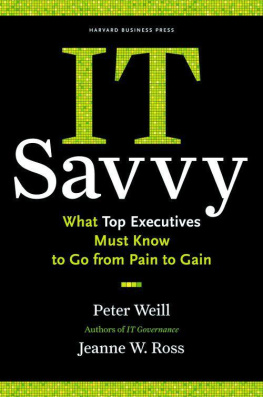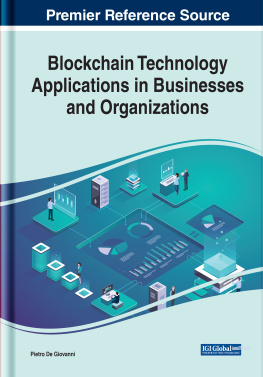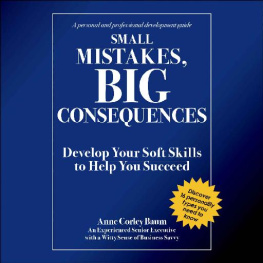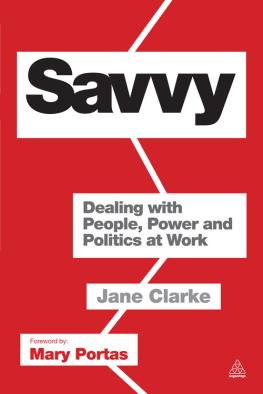Copyright 2009 Peter D. Weill and Jeanne W. Ross
All rights reserved
No part of this publication may be reproduced, stored in or introduced into a retrieval system, or transmitted, in any form, or by any means (electronic, mechanical, photocopying, recording, or otherwise), without the prior permission of the publisher. Requests for permission should be directed to , or mailed to Permissions, Harvard Business School Publishing, 60 Harvard Way, Boston, Massachusetts 02163.
First eBook Edition: July 2009
ISBN: 978-1-4221-8101-0
CONTENTS
____________________________________
As we write this preface, the business world is experiencing what looks like one of the most far-reaching financial crises in living memory. Banks, car-manufacturing companies, government agencies, nations, states, retirement funds, and overall confidence have all taken a pounding. One of our favorite management theorists is Niccol Machiavelli (circa 1530). Machiavelli would have reminded us that you should never, never, never waste a perfectly good crisis.
As we work through this financial crisis, businesses will need to rethink how they operate. No longer will it suffice for firms to go through periods of spending for growth and then periods of rationalizing cost to increase margins. Todays global business environment and investment community demands simultaneous profit and growth. Achieving consistently profitable growth will mean managing to achieve rationalization and business agility simultaneously. This will require changing the way firms operate. Perhaps the crisis has an upside. People and organizations will be much more willing than usual to make the necessary and far-reaching changes that are usually very difficult. Machiavelli put it well: There is nothing more difficult to take in hand, more perilous to conduct or more uncertain in its success than to take the lead in the introduction of a new order of things. This book is about making those changes and creating a new order of things in your firma new order that is digital.
Now is the time for bold leaders to prepare their organizations for the next couple of decades. We think one of the biggest opportunities and challenges for you will be the digitization of business. Every interaction between a customer and a business, between a business and another business, between employees in a business, and between a government and a business will become more and more digital. Information technology (IT) spending will continue to increase in virtually every enterprise. Business processeseverything from order-to-cash, search-to-hire, or idea-to-launchwill become increasingly digital. The information that these digital processes produce will allow firms such as 7-Eleven Japan to continue being one of the most profitable retailers by having a real-time picture of what is selling across its more than twelve thousand stores. 7-Eleven Japan, no longer a traditional retailer, effectively brokers this information to its business partnersfor a feeacross its network of franchised stores, distribution centers, manufacturers, and logistics providers. 7-Eleven Japan is one of the most IT-savvy companies around. It thrives in the digital economy.
A digital economy enables a business process to run flawlessly, twenty-four hours a day. Information is pervasive and sometimes overwhelming. Markets are electronic, and matching buyers and sellers is easy. Search is universal and fast. Many new products can be tested online and scaled quickly if successful. There are cybercrime and privacy issues, however, as well as the risk of system failures temporarily shutting down businesses. A digital economy therefore means we need a fundamentally different approachand IT-savvy firms are leading the way.
Rather than identify the business need and build or acquire a system to meet that need, IT-savvy firms take a different approach. IT-savvy firms decide how they want to operate and proceed to build a digitized platform of business processes, IT systems, and data to execute on their operating strategy. These platforms not only utilize IT capability to repeatedly execute business process, but also provide the information to identify where future profitable growth will come from. Then, with marginal investment, these firms create the new products and services that are faster to market because they reuse the platform. Best of all, IT savvy pays off. IT-savvy firms are 20 percent more profitable than their competitors. This book is about what it means to be an IT-savvy leader and firm, why its important to be IT savvy, and how to become more IT savvy.
We were motivated to write this book on a cold and wintry December day in Boston. We had just finished teaching in the MIT Sloan School of Managements IT for the Non-IT Executive program. This programwhich runs three times a yearbrings together eighty to one hundred senior executives at MIT to talk about how to get more business value from IT. We, along with our MIT Center for Information Systems Research (CISR) colleagues George Westerman and Chuck Gibson, have been lucky enough to teach in this program since 2000. We usually commence the program by asking the executives to turn to a neighbor and describe whats wrong with IT in their firm. The conversations begin quietly, but soon there is an almighty din in the room as participants passionately explain their frustrations. Its a defining moment in the program when, several sessions later, we offer an explanation: perhaps you get the IT you deserve. If you change strategies often, or dont clarify how you want to operate the firm, or abdicate IT decisions and move rapidly from one project idea to the next, how can any organization excel in using IT? At best the IT unit will always be reactive and will never be able to get out in front of your organizations strategic needs.
This book is a summary of the lessons learned over the course of more than twenty years of research into what it takes to be IT savvy and how to get maximum value from IT. For the last ten years we have been fortunate to collaborate on much of that research and work with many great executives while at the MIT Sloan School of Managements Center for Information Systems Research. The book is a testimony to those senior executives with whom we have worked in MIT Sloans executive programs, our research sites, and our facilitation work. Now we want to share what we have learned with all executives for debate and discussion.
WHO SHOULD READ THIS BOOK
This book is written for all executives who know, deep down, that IT is critical to their business and would like to learn how top performers manage IT. Based on field research in hundreds of firms, we have aimed to boil down to its essence what you need to do to make IT a strategic asset rather than a liability. We discuss the business and IT decisions with enough detail to guide implementation. The language, style, data, examples, and lessons are about business issues that rely on technology.
We encourage all managers to read this book and discuss how IT savvy they are today and where they would like to be in three years. More important, we encourage you to ask yourself, What do I need to do differently? What are the practices we use today that have made us less IT savvy and gotten us into trouble? For simplicity of language we adopted the word firm in this book. However, our comments relate equally to all organizations, whether they are large or small, for profit, not for profit, or government. Our intention is to capture the imagination and challenge the assumptions of managers in all industries as they lead their firms in an increasingly digital age.







